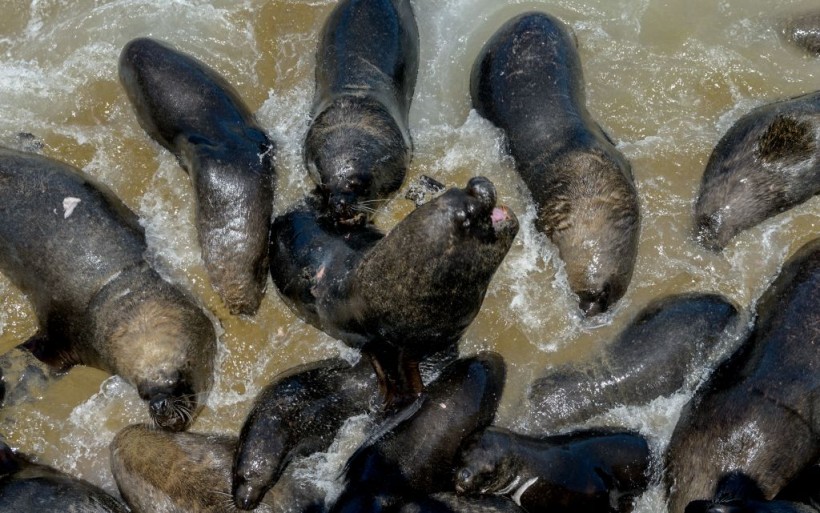Avian influenza, commonly known as "bird flu," has not only impacted a significant number of poultry, such as chickens, geese, and ducks, worldwide; but it has also extended its reach to sea birds, spanning from the North Atlantic to the shores of Central and South America.
Disturbingly, this viral outbreak is now affecting marine animals. According to Phys.org, recent findings linked the virus to the deaths of thousands of not only sea lions but also penguins, otters, and small cetaceans.

View of sea lions in Valparaiso, Chile on November 23, 2018.
Bird Flu-Infected Marine Animals
Chile's north coast is currently grappling with a devastating avian flu outbreak that has resulted in the deaths of nearly 9,000 sea lions, penguins, otters, and small cetaceans, according to the country's fisheries service.
As Phys.org reported, over 7,600 sea lions, 1,186 endangered Humboldt penguins that are native to Chile and Peru, as well as various otters, porpoises, and dolphins, have been discovered lifeless along the coast since the start of 2023.
The disease has affected 12 out of Chile's 16 regions, prompting the implementation of surveillance protocols, including the burial of affected animals, in an attempt to curb further transmission of the virus.
This outbreak is part of a global avian influenza crisis that began in late 2021, resulting in extensive culling of poultry, widespread wild bird deaths, and an increasing number of infections among mammals in multiple countries.
As per Oceana, the bird flu that is causing infections to marine animals in Chile is caused by the H5N1 variant, which was detected in 1996 in large numbers of geese in East Asia. The virus rapidly spread in other poultry that a highly contagious form of the virus was detected in 2014. That version mutated to infect even wild birds, including seabirds, and not just poultry.
The avian flu virus spreads through the migration of wild birds, particularly seabirds, which are known for their extensive migratory patterns. The virus has expanded its reach from North America to South America, affecting countries such as Chile, Ecuador, and Peru. Seabirds in the Atlantic have also been impacted by the bird flu, with cases even reported in the Arctic region.
In Chile, a total of 763 sea lions, sea otters, and Humboldt penguins succumbed to the bird flu outbreak during the initial quarter of 2023. The virus has been detected in at least 11 regions across Chile and has affected 21 different species of seabirds. Its spread appears to be extending towards the south, prompting veterinarians from the University of Chile and other organizations to investigate the potential impacts in Antarctica.
READ ALSO: Avian Influenza Spreading in Some Mammals in Minnesota After Devastating Commercial Turkey Flocks, USDA Data Reveals
Bird Flu Infection in Humans in the Americas
The World Health Organization (WHO) announced that zoonotic influenza infections in humans can vary from mild respiratory symptoms to severe pneumonia and even death, depending on the virus and the individual's health.
Cases of avian influenza in humans usually occur through direct or indirect exposure to infected birds or contaminated environments. In the Americas, there have been increasing outbreaks of highly pathogenic avian influenza A(H5) in various types of poultry, wild birds, and mammals.
Since 2014, three human infections with avian influenza A(H5) have been reported in the Americas. Globally, since 2003, the World Health Organization has recorded 873 human infections with A(H5N1) viruses, resulting in 458 deaths.
RELATED ARTICLE: Cat Tested Positive for Avian Influenza After Eating a Bird, Health Officials Confirm
Check out more news and information on Bird Flu in Science Times.














